3D printing - to schools (techno-marathon for assembling 3D printers in Yekaterinburg)
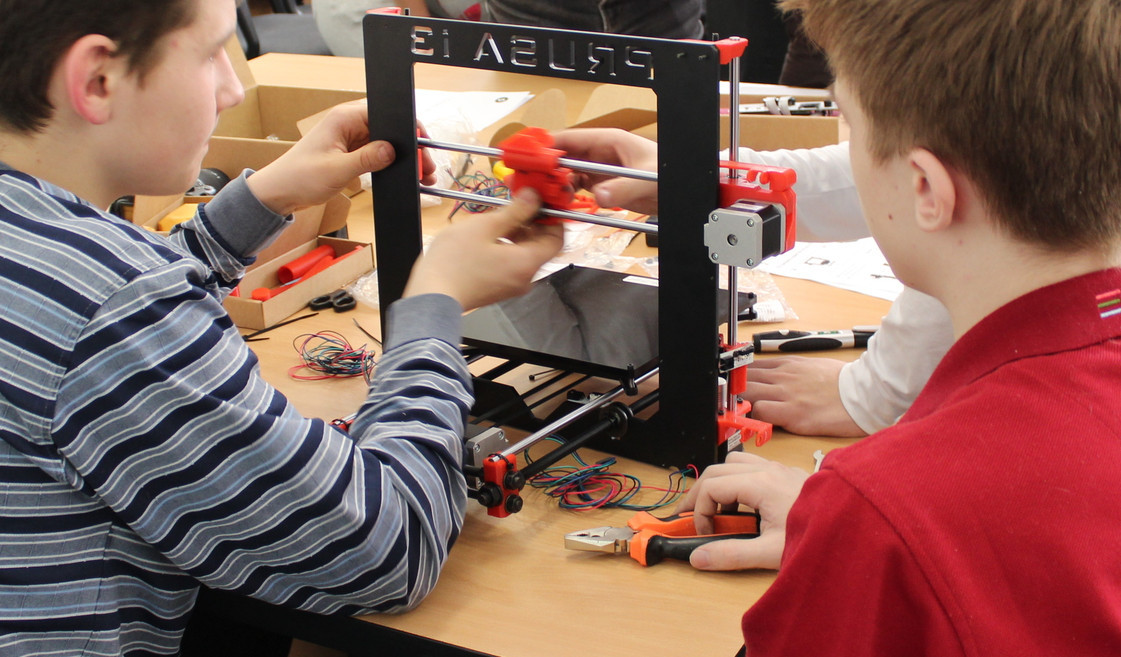
Most of our readers know that one of the main activities of MakeItLab hackspace is 3D printing. This is a very interesting and promising area we are developing for the third year. During this time, our residents managed to hold a lot of events, seminars and lectures aimed at popularizing technology.
The technical education of schoolchildren can be considered an equally important area of hackspace work. On these issues, we even have several articles on the hub ( one , two , three , four ). And it would be foolish of us not to try to combine these two directions. Give children printers
What is the best way to combine 3D printing and children's technical creativity? And most importantly, where to start? You can probably buy a printer at school, tell the computer science teacher how to use it. is that enough? Obviously not.
This year, together with the friendly organization Ural Club for New Education, we launched a series of events for assembling 3D printers by teachers and schoolchildren. What is it, and whether we managed to assemble these same 3D printers, read below under the cat!
Technomarathon
The first event was held in the framework of the festival "City of Techno-creation", which started in February in our city. With the filing of the head of the club, Irina Zakirova, this action was called "Technomarathon."
Background
The idea of a collective assembly event for 3D printers is not new. In our country, for example, guys from the hackspace "Navigator Campus" are engaged in such a noble deed. They call this action "Makerton 3D Printer."
The essence of the event is extremely simple. We invite several teams of participants who are invited to assemble a 3D printer on their own. For assembly, the teams are given everything necessary - a kit for assembling the printer (to varying degrees of readiness), tools, instructions. Also required is the presence of competent engineers who are ready at any time to come to the rescue. Often, assembly takes place as a competition. Anyone who collects his printer faster than others receives some useful prize. For example, he gets a 3D printer for free!
We also dreamed about this idea from its very foundation, we waited for the stars to form, so to speak. And finally, half a year ago, we managed to combine our engineering knowledge with the organizational abilities of Irina Zakirova, and began preparations for the techno marathon for assembling 3D printers!
What for?
So, let's start with the most important question: why does the school need a 3D printer? We encounter a lot of skepticism about this, which we constantly have to break up with examples from life and world experience. So what is a printer for? Yes, at least for the quick reproduction of teaching aids. Looking at the portals of foreign 3D printers, you can find many different objects that allow the child to learn a lesson more effectively.
A simple example is a biology lesson. What if, instead of a DNA picture, each child can print out a piece of a double helix, feel it, understand its spatial features? Even throwing a neighbor, and then it will be more useful than contemplation of the picture.

Or another example is a plant cell. You can pull out the mitochondria :)

For a biology lesson, you can also print, for example, bones, organs, or whole animals. On physics: working models of mechanisms, stands for physical experiments. In mathematics: surfaces defined by tricky functions, sections of shapes, fractals. Etc. I believe that we will devote an entire article to this separately.
A similar question can be asked of the house of creativity. But there the answer is even simpler. A 3D printer in technical creativity is an indispensable tool for the rapid manufacture of parts. Today, printed parts are widely used in educational robotic projects, in aircraft and ship modeling. A good example is a quadrocopter, whose frame is printed on a 3D printer.
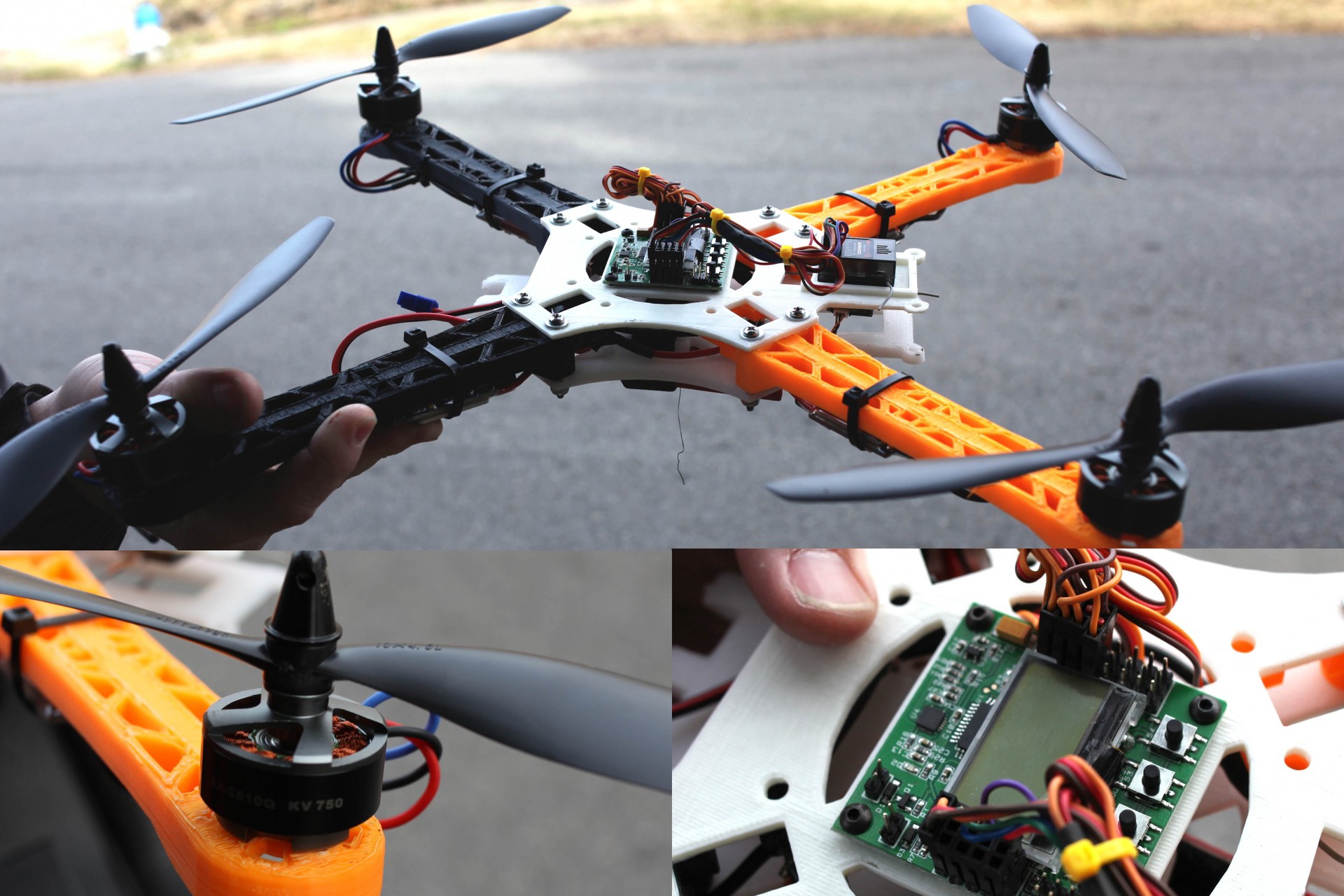
There is an even more valuable layer of applicability of a 3D printer - this is 3D modeling. It's one thing to just print the finished model. Other: first invent an object, then design an object, and finally print it on a 3D printer. It is this case that is most interesting to us in terms of children's technical creativity.
At whose expense is the banquet?
But back to our techno-marathon. And the first question: who will buy printers for schools?
The first option that we tested is to try to get some kind of specialized grant. Unfortunately, the option did not play. This does not mean that the approach is incorrect in principle, we just failed.
The second option is to ask for money from large (and not so) enterprises. As you know, industrial enterprises often take patronage of schools, and try their best to help these schools with the ruble. But in order to bring such an idea to the management of the company, you need to have direct connections and recommendations. We started our event with a clean face, and we didn’t have any friendly enterprises. As a result, of the six teams announced, one company paid for the 3D printer (Beloyarsk NPP), the other bought the printer with grant money (thanks to SKB-Kontur, and greetings to all IT companies). Again, the option itself works. After the first techno-marathons, we hope for much wider support from the regional enterprises.
The third option is to pay for printers from extrabudgetary funds at school or at home. As practice has shown, this is also a fully working option. Of course, provided that a 3D printer costs a reasonable price. Here, in fact, the second big org question arises:
Which printer will we assemble?
The first thing that comes to mind is the RepRap Series 3D printer. These are printers that were thought out specifically for assembly at home. According to RepRap, there is a lot of documentation, videos, and even in our hackspace, we once started exactly with such a simple machine. In general, the choice fell on the Prusa I3 from the Spanish company BQ . Here he is handsome, in the photo.
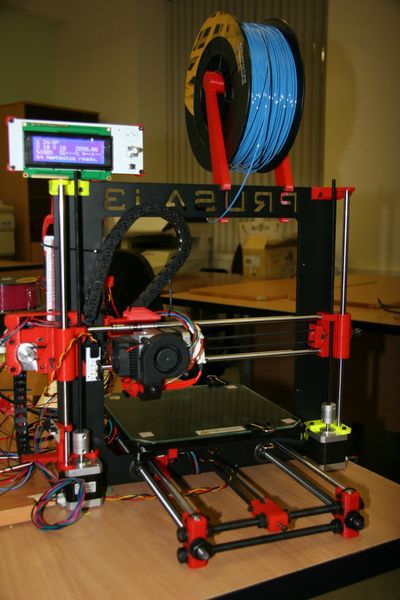
By the way, one of those that our techno marathoners gathered.
Members
According to generally accepted practice, teams of any number of people take part in the event. As many teams participate as the organizers can withstand at a time. In our case, three teams a day was the best option. In total, six teams entered our first techno marathon, which we divided into two groups:
February 28, 2015
- Center for Education and Vocational Guidance of Verkhnyaya Pyshma;
- School No64 from the city of Lesnoy;
- Polytechnic department of the Palace of Youth.
March 5, 2015
- Center of children's creativity of the city of Irbit;
- School No1 GO Zarechny;
- House of children's art in the Oktyabrsky district of Yekaterinburg.
All that is needed
In order to assemble printers, in addition to the participating teams, we needed:
- soldering irons - to solder nuts into the plastic parts of the printer;
- files (flat and round) - for fine-tuning the parts inserted into each other;
- screwdrivers and a set of hexagons;
- drill and set drilled - to drill poorly printed holes;
- scissors and office knife;
- ruler - for calibration;
- pliers - to flatten everything :)
- hammer or mallet - to drive bearings.
Well, of course, all this had to be multiplied by the number of teams.
And you also need helpers, which can be students of technical universities, or just sleeve guys (or girls). You should always be on the alert, and help the lagging teams.
Assembly
The assembly of 3D printers was carried out according to a clear (Russian-language) step-by-step instruction provided by the manufacturer. In general, I must admit, the BQ Prusa I3 Hephestos printer was perfect for the tech marathon. Yes, there were awkward moments with breaking parts and poorly fitted grooves, but it is extremely difficult to find Russian-language analogues for the money.
So, unpack the boxes with the details. Everything is packed extremely conveniently and presentably.
Intensively we put together all the details of the case. By the way, at this stage, several times there were problems with the layout. The fact is that the printer frame is almost symmetrical, and you can easily confuse which side to put it on. Of course, there is a large inscription “Prusa I3” on it, but the participants, plunged headlong into the assembly, often did not pay attention to it. As a result, some printers had to be reassembled at a pace (not completely, of course).
Electronics
The most important part. If you mess things up, you can easily burn the 3D printer controller or some sensors. Fortunately, in the native instructions there are color schemes, following which it is difficult to confuse anything.
Calibration
The printer is ready. All axes work as expected, moving in the right directions. There comes the penultimate stage before printing - calibration. In fact, we need to adjust the working surface and the end of the vertical axis so that at all points of the field the nozzle is at a distance of 0.3-0.5 mm.
Duration
Now about the time. Initially, we set aside everything about everything - 5 hours. This was supposed to include an introductory lecture for 30-40 minutes, lunch, and the assembly itself. Oh, how wrong we were! The first event ended in the evening, at about 8 o’clock!
The second techno marathon took about the same. From this we can conclude that, on average, assembling a printer takes about 8 hours (if less messing around and messing around).
The final
And here are our satisfied participants with their 3D printers!
Team of the Polytechnic Department of the Youth Palace of Yekaterinburg
Team of the Center for Education and Professional Orientation of Verkhnyaya Pyshma
Team of School No64 from Lesnoy
Team of the Center for Children's Creativity of the City of Irbit
Team of the House of Children's Creativity of the Oktyabrsky District of Yekaterinburg.
Team School No1 GO Zarechny
What are 3D printers working on after the tech marathon?
We ourselves, as an organizer, are terribly interested in the further fate of the assembled 3D printers. The very first review came from Leonid Gushchin, a teacher at the Robotodrome of the Youth Palace:
So, 3D printing technologies have come to our circle!
The 3D printer was calibrated and printed the first model: a small robot figure. In honor of the fact that this modelka is the first, she even received the name Yeryoma. Well, meet our plastic friend!
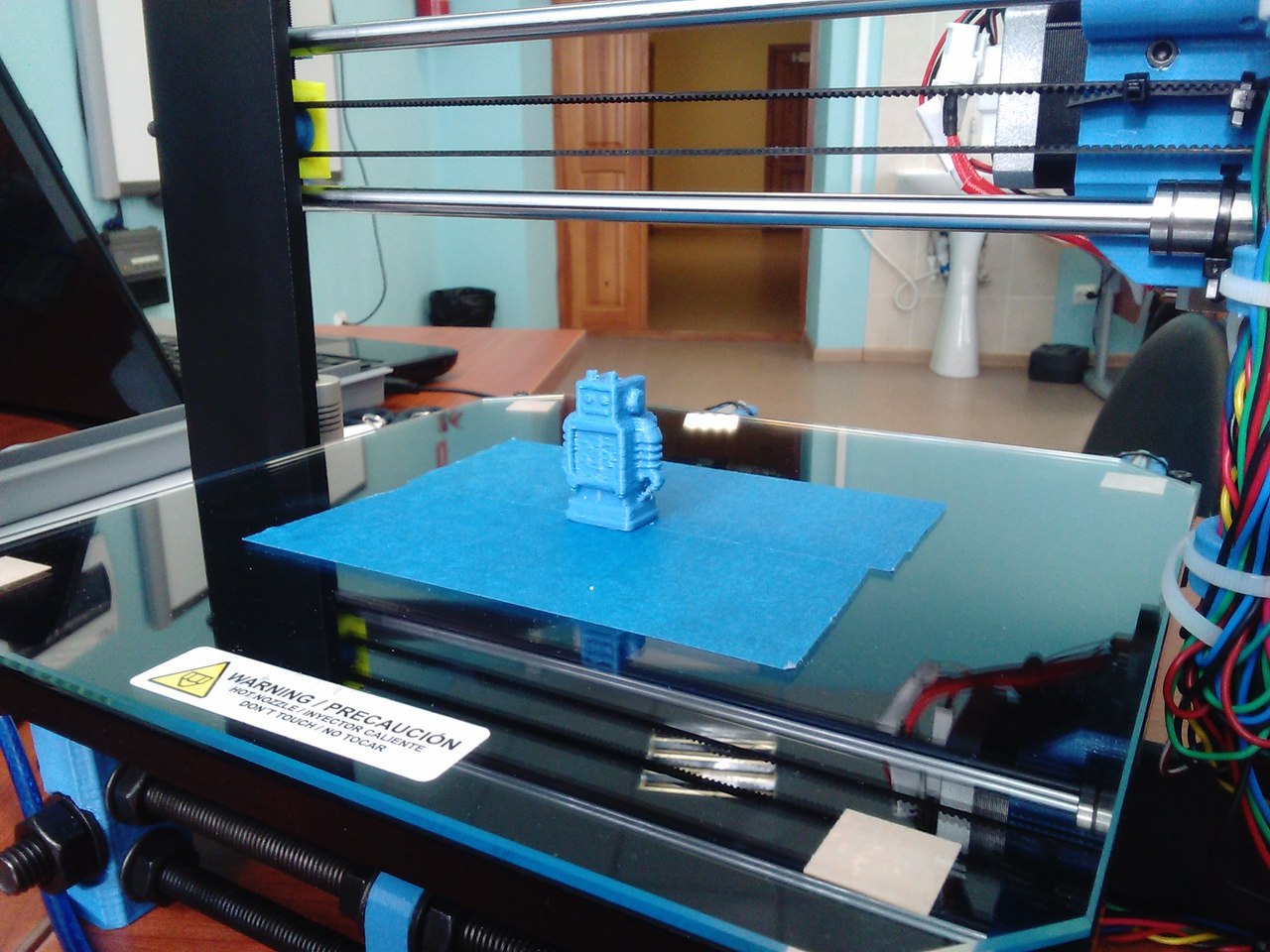
Of course, the robot’s figure was not limited to:
On Wednesday, we indulged in robot models))
And today we have already printed mounts for servos:
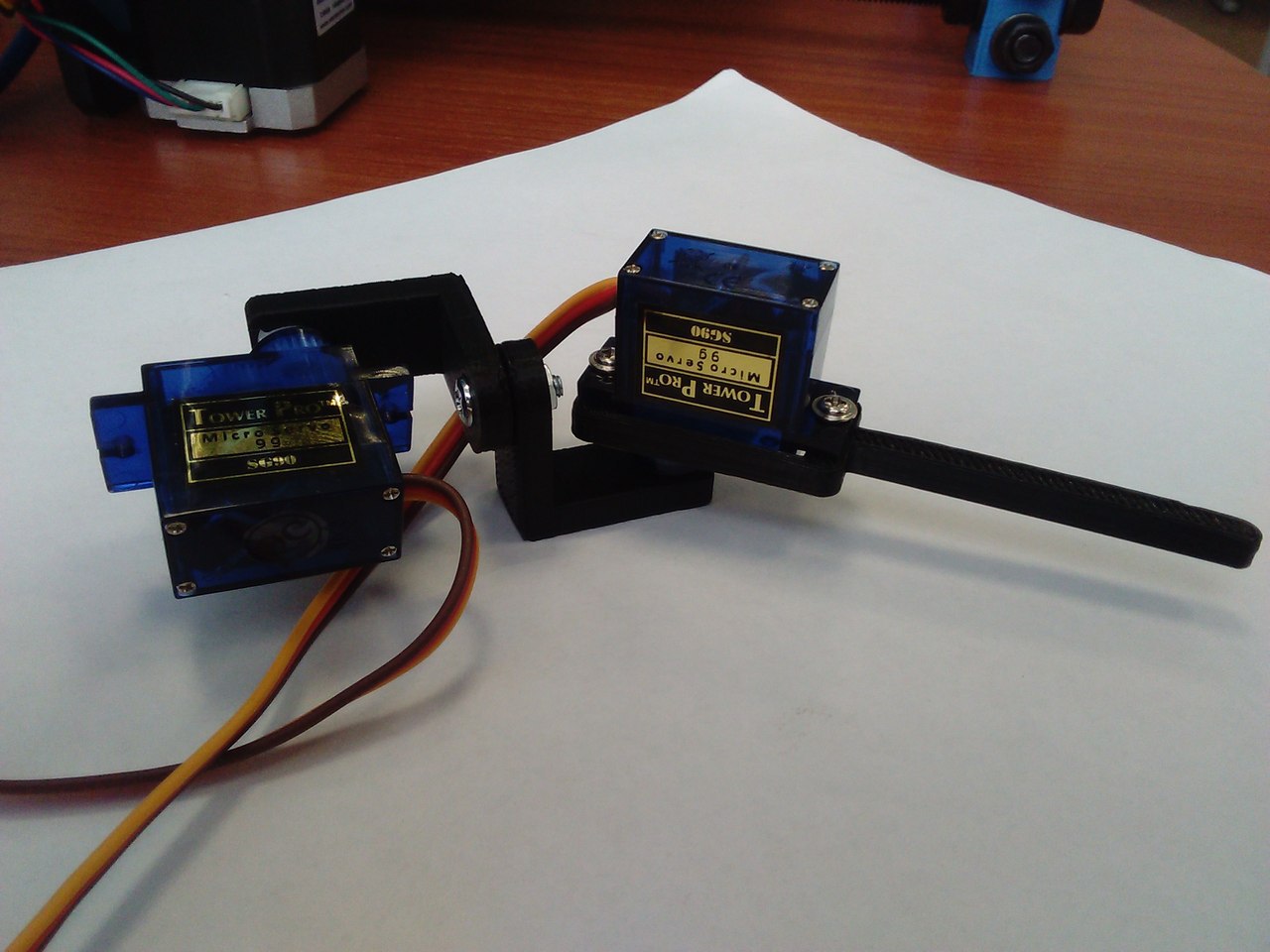
And further:
Well, a 3D printer is really an archipostal thing! And of course you understand his work much better when you assembled it yourself.
So thanks again to the organizers and experts for the techno marathon!
Acknowledgments
- Thanks to Irina Zakirova, the main organizer of the event: “When you organize and hold an event, the participants are so happy with the result, you feel joy and pride in the quality work done. We did it!"
- Thanks to Alexey Samoilov, head of Witbox Maker School ( Witbox Russia )
- Thanks to the Ural Polytechnic College for a great place to hold a techno marathon and help in organizing this event.
- Thanks to our experts: Oleg Evsegneev and Pavel Tomshin for their professional work. On March 5, volunteers — students and technical specialists — Fedor Zyablitsev, Ilya Bannikov, and Igor Vormanov, helped the teams a lot. Thanks a lot!
- Thanks to all participants who, despite fatigue and stress, reached the end!
In the news
The 3D printer assembly marathon even got into the local issue of Vesti-Ural:
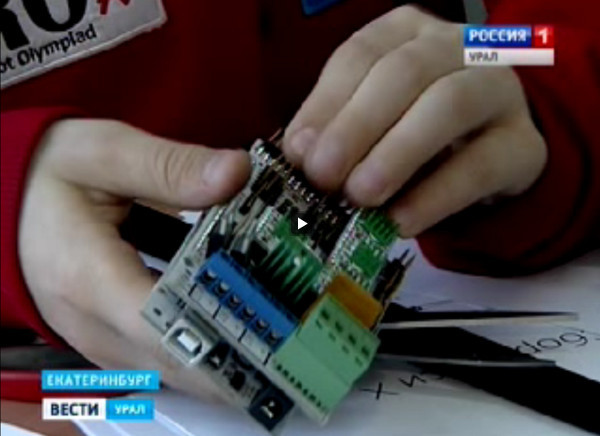
What's next?
In the near future, we are planning to develop a small workshop on modeling and 3D printing, which we will offer to all participants of the technomarphone, or simply to the happy owners of 3D printers. The masterclass will be held on a separate day, and will approximately take about 8 hours, including lunch and coffee breaks. The main goal of such an event is to make sure that upon returning to an educational institution, the printer has a large print queue.
Application for participation
Well, the immediate plan is to recruit a new group for the techno marathon! For convenience, we have created a small profile for the participant .
Write - if you are from Yekaterinburg or the Region. But also note if you are from other regions of Russia, and for:
- a school,
- a home of creativity,
- a robotics club
- or another club - where children study,
it would be interesting to assemble a 3D printer. And if you don’t have enough money to participate, we will try to help, find sponsors.
For sponsors
In turn, for sponsors, if you want to support the development of 3D printing in schools in Yekaterinburg / oblast, or in your city, mark this questionnaire: application form for patrons .
The organizer Irina Zakirova will contact all registered participants and discuss all organizational issues.
